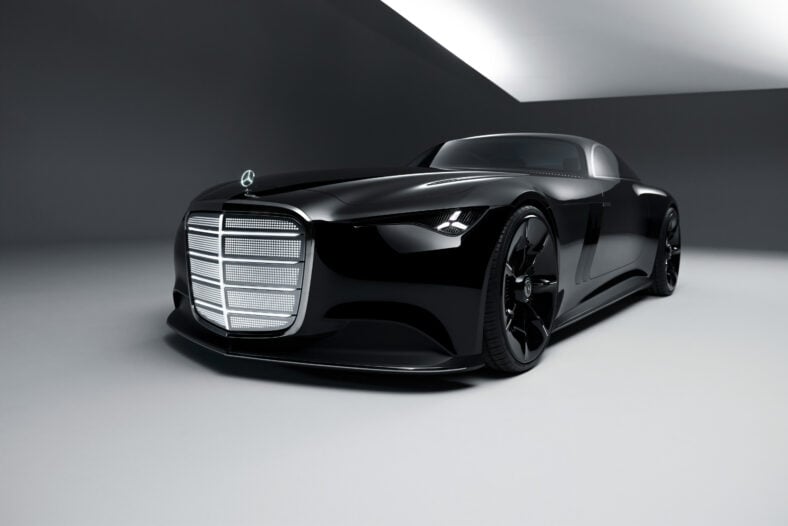
As the name suggests, the Mercedes-Benz Vision concepts aim to preview the future of the German marque’s fleet, from decked out luxury minivans to spaceship-inspired all-electric supercars. While the latest Vision Iconic creation is an EV with autonomous driving capability, thoroughly vintage design elements make the vehicle arguably the most memorable of the Vision concept canon.
The front’s traditional chrome grille, featuring a smoked-glass lattice structure and integrated contour lighting, is a riff on a key design element that’s appeared on several historic models. The grates call to mind the W 108 and W 111 of the 1960s/1970s and the massive Mercedes-Benz 600 Pullman luxury limousine that reigned as the flagship from the 1960s through the 1980s. The largely unchanged star ornament also harks to models from Mercedes’ past and present, while the slim three-spoke headlights and high gloss black paint decidedly modern.
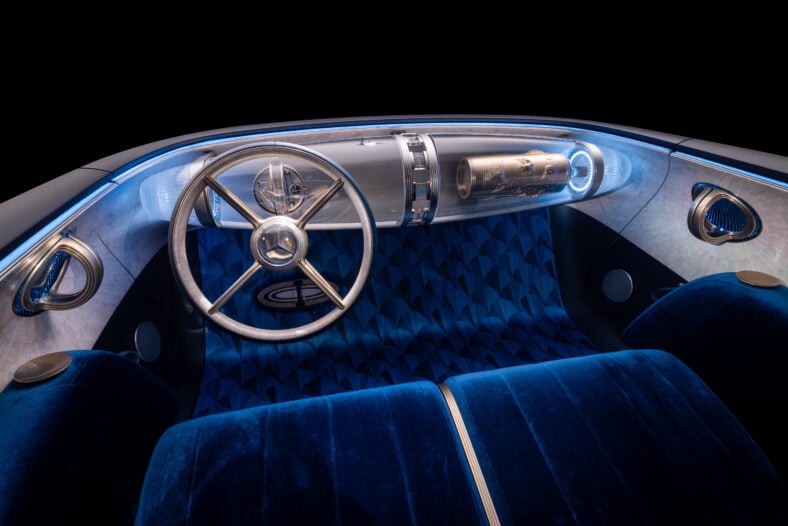
The interior is bolder and brimming with anachronisms. The floating glass structure, dubbed “Zeppelin” in reference to its cigar-like shape, contains an instrument cluster that “comes to life with a cinematic, entirely analog animation inspired by high-end chronographs.” Directly in front of the driver is a cluster of clocks, one of which serves as an AI assistant. Behind the Zeppelin is a folding decorative surface featuring a mother-of-pearl-like inlay, which matches the real mother-of-pearl inlay on the door panels. The seats and floor are clad in deep blue velvet, and the four-spoke steering wheel features a Mercedes-Benz logo floating in a glass sphere.
For all of its bold aesthetic choices, the Vision Iconic also boasts some fascinating technology that promises to improve its EVs by way of a wafer-thin solar coating that has the potential to increase range drastically. When applied to a vehicle the size of the Vision Iconic, the solar coating could generate enough energy to fuel up to 7,450 miles under ideal conditions. Today, the 512-mile 2025 Lucid Air Grand Touring has the best range of any EV on the market.
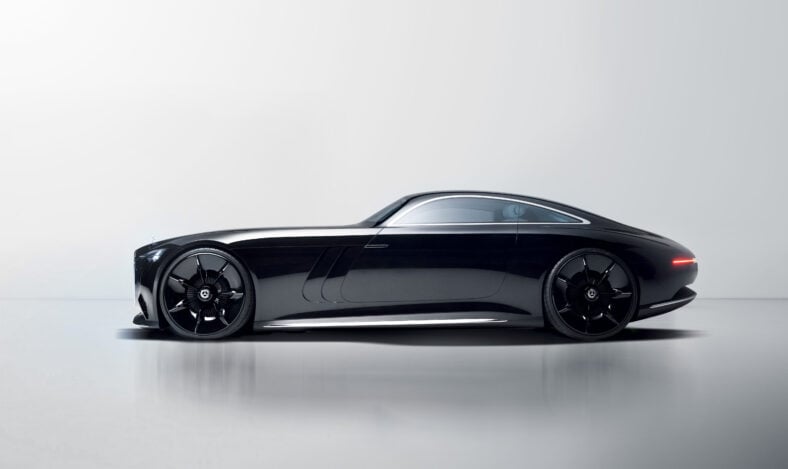
The automaker Vision Iconic also boasts neuromorphic computing—technology that mimics the human brain—to make autonomous driving significantly more efficient. This system could be up to ten times more efficient than current setups, potentially reducing energy requirements for self-driving data processing by 90 percent.
The Vision Iconic also previews the future of assisted driving, coming standard with enhanced Level 2 city capabilities, which includes cooperative steering and acceleration for complex urban scenarios. Mercedes-Benz is preparing the vehicle for Level 4 highly automated driving, which would allow the driver to completely disengage on the freeway and use the cabin as a “luxurious lounge” for relaxing or streaming video. Upon arrival, a Level 4 parking function allows the vehicle to park itself without driver intervention in nearly all scenarios.
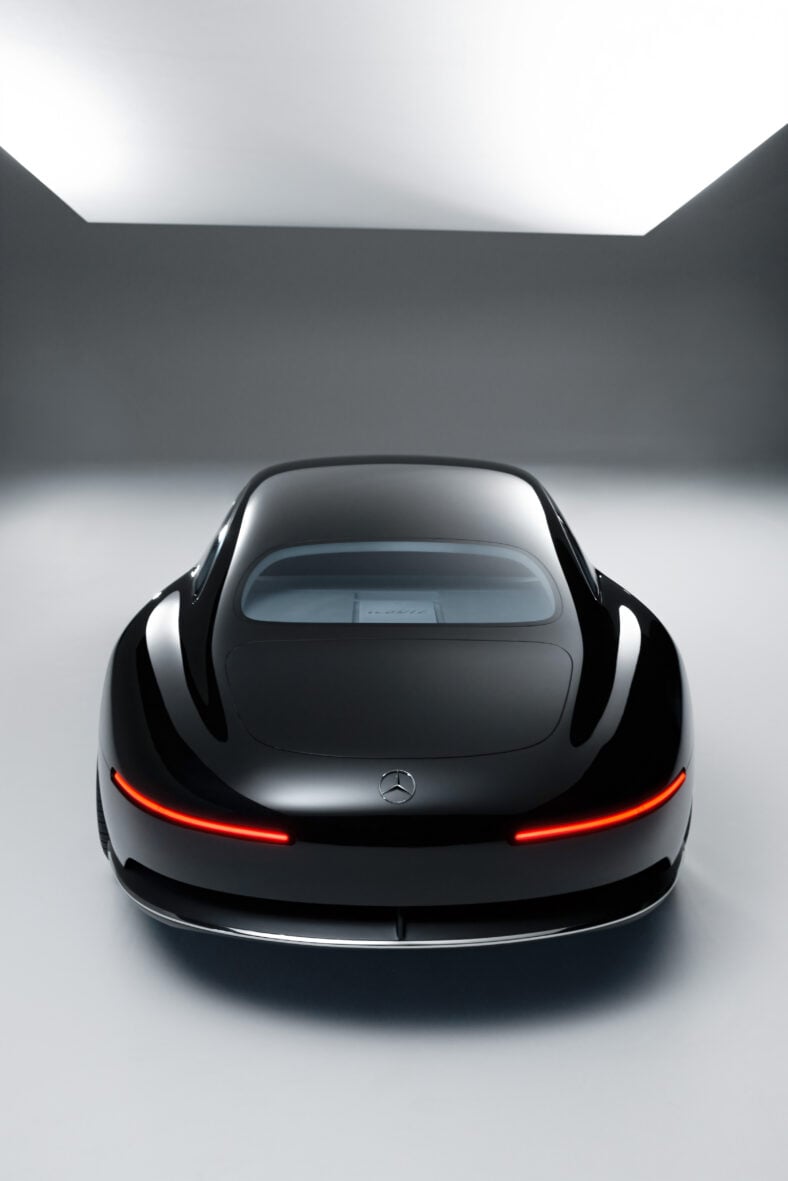
“Inspired by the golden era of automotive design of the 1930s, this show car embodies the pure essence of Mercedes‑Benz. With its seemingly endless hood giving it a majestic presence, sculptural flowing lines, and a touch of Art Deco, it rises to become a true icon of automotive beauty,” said Gorden Wagener, Mercedes’ Chief Design Officer.
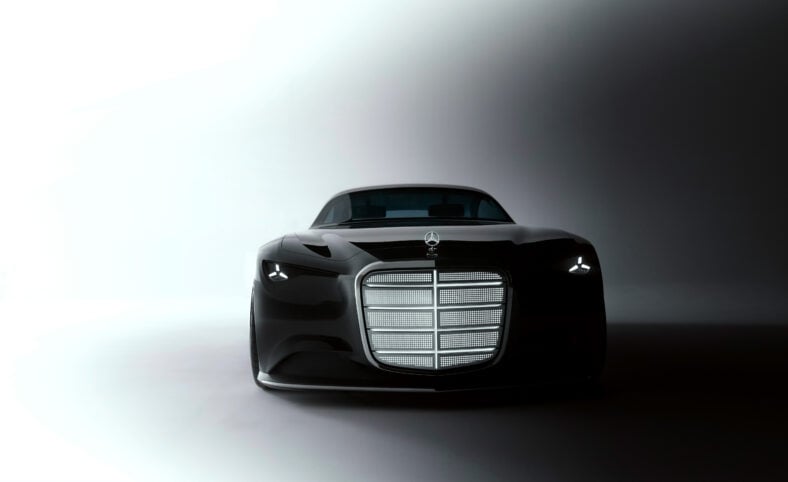
“The interior with its continuous bench seat and the elegant rear, evoking memories of the legendary 300 SL. Our Vision Iconic is more than just an automobile—it is a sculpture in motion, a homage to timeless elegance, and a statement for the future. The symbiosis of traditional craftsmanship, state-of-the-art technology, and an unmistakable design language makes it the ultimate expression of value, prestige, and grace: the most beautiful, most prestigious kind of thing.”